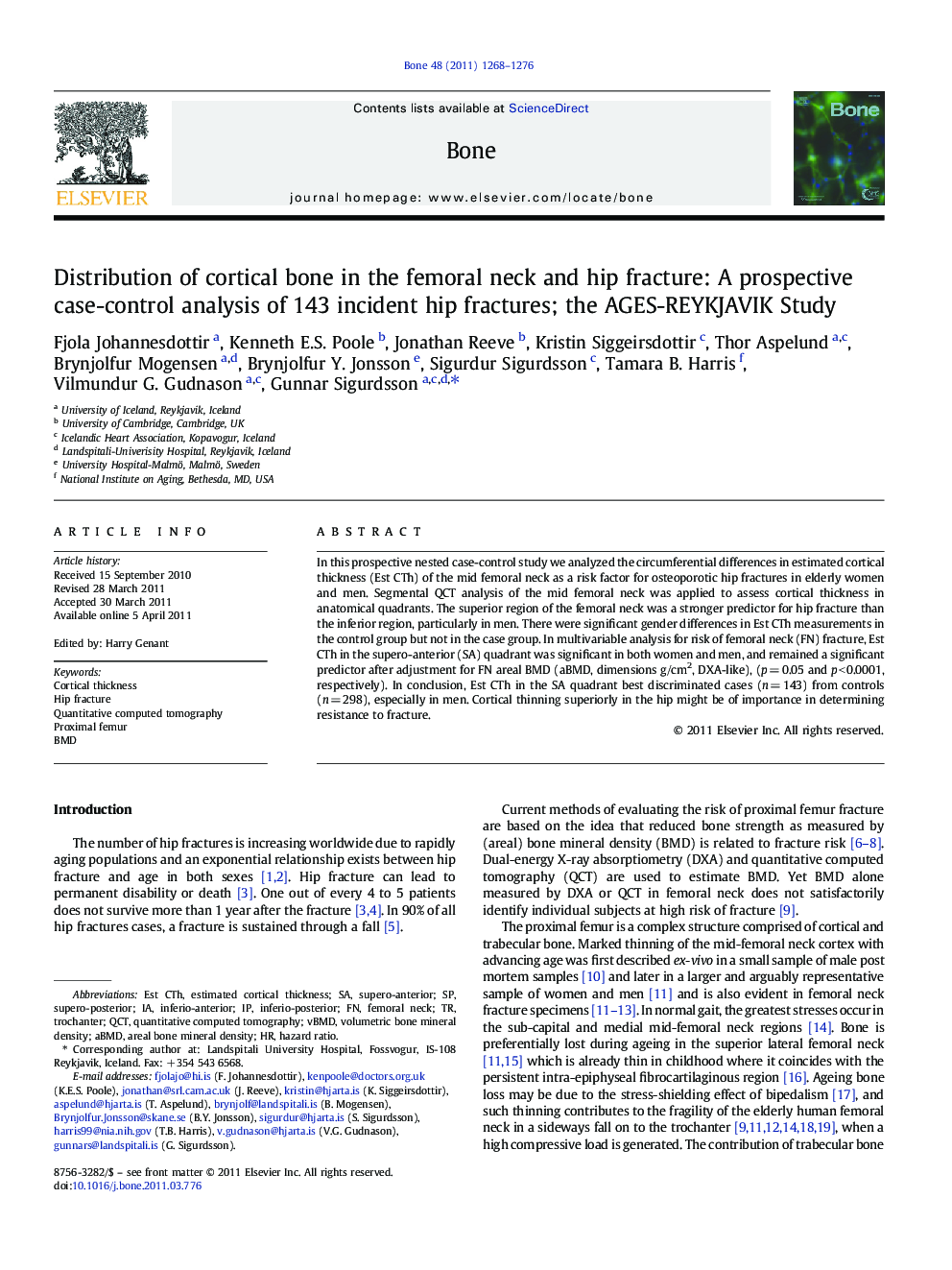| کد مقاله | کد نشریه | سال انتشار | مقاله انگلیسی | نسخه تمام متن |
|---|---|---|---|---|
| 2779974 | 1153288 | 2011 | 9 صفحه PDF | دانلود رایگان |

In this prospective nested case-control study we analyzed the circumferential differences in estimated cortical thickness (Est CTh) of the mid femoral neck as a risk factor for osteoporotic hip fractures in elderly women and men. Segmental QCT analysis of the mid femoral neck was applied to assess cortical thickness in anatomical quadrants. The superior region of the femoral neck was a stronger predictor for hip fracture than the inferior region, particularly in men. There were significant gender differences in Est CTh measurements in the control group but not in the case group. In multivariable analysis for risk of femoral neck (FN) fracture, Est CTh in the supero-anterior (SA) quadrant was significant in both women and men, and remained a significant predictor after adjustment for FN areal BMD (aBMD, dimensions g/cm2, DXA-like), (p = 0.05 and p < 0.0001, respectively). In conclusion, Est CTh in the SA quadrant best discriminated cases (n = 143) from controls (n = 298), especially in men. Cortical thinning superiorly in the hip might be of importance in determining resistance to fracture.
Research highlights
► Cortical thickness by QCT in mid femoral neck in hip fracture cases and controls.
► Cortical thickness (CTh) in the super-anterior quadrant best predicted hip fracture.
► There was no significant difference in CTh in the fracture group between sexes.
► Majority of elderly women and minority of men have a critical thinned superior cortex.
► Thin superior cortex is a stronger risk factor than the inferior region.
Journal: Bone - Volume 48, Issue 6, 1 June 2011, Pages 1268–1276